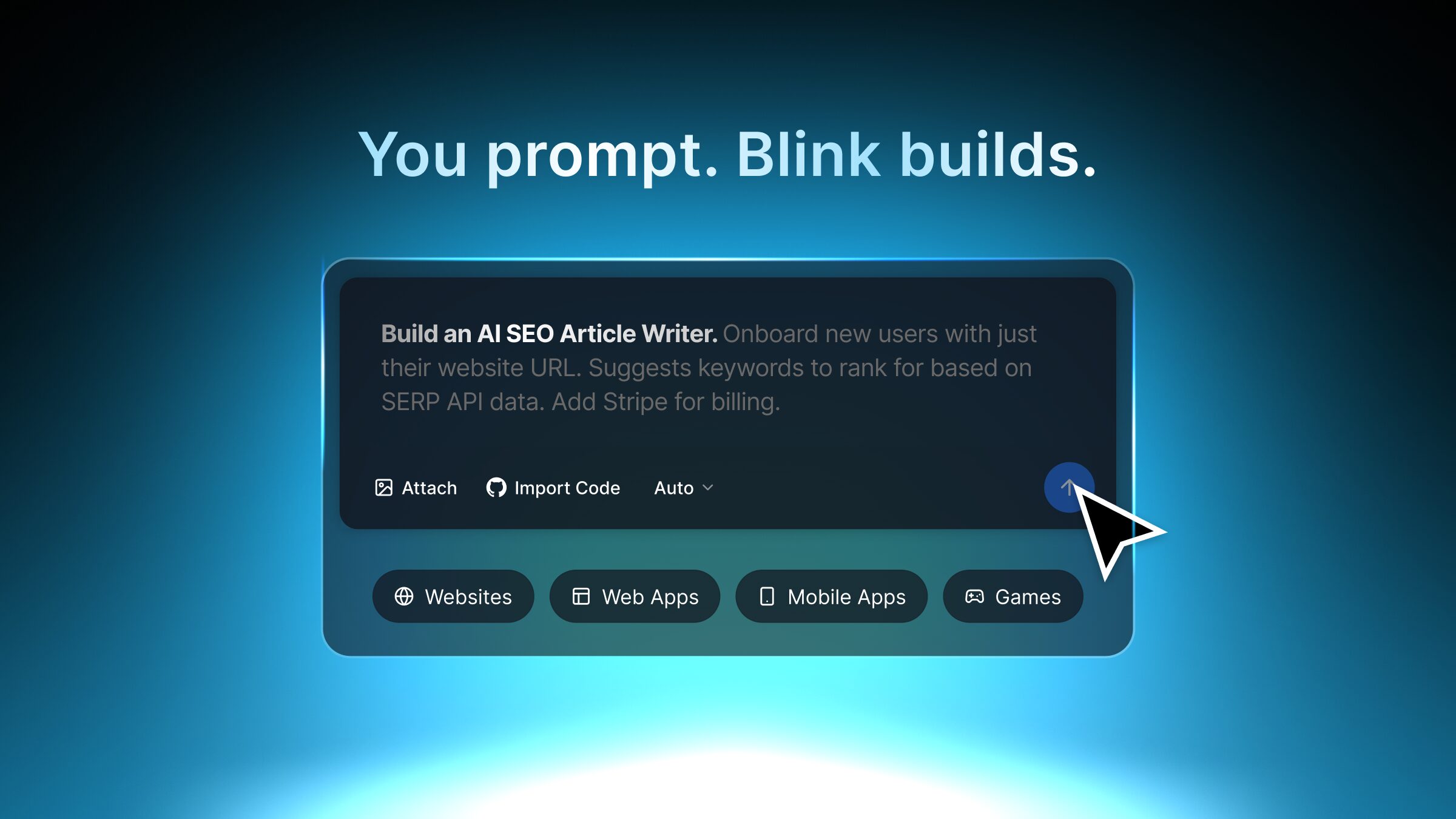
Table of Contents
Overview
Blink is an AI-powered builder that converts plain-language app descriptions into fully working web and mobile applications within seconds. The platform automates front-end generation, back-end logic, database setup, authentication, hosting, and deployment. Unique to Blink is its automated debugging: the AI monitors build and runtime errors and applies fixes without user intervention. Blink runs on a unified infrastructure that includes a hosted SQL database, edge functions for server-side code, and global CDN delivery. This end-to-end approach aims to eliminate manual DevOps and accelerate delivery for nontechnical founders, product designers, and small teams.
Key Features
- Natural-Language App Generation: Describe your app (“habit tracker with Slack reminders”) and Blink builds complete UI screens, routes, and data models automatically.
- Built-In Authentication: User sign-up, sign-in, password resets, and role-based access control are configured out of the box.
- Managed Database \& Edge Functions: Blink provisions and connects a SQL database; server-side operations run as low-latency edge functions powered by Deno.
- Automatic Debugging \& Bug Fixes: The system inspects build logs and browser console errors in real time and patches issues—no error tickets or manual troubleshooting required.
- Instant Hosting \& Deployment: One-click deployment publishes to a blink.new subdomain with HTTPS, global CDN, and automatic scaling.
- In-Platform Code Editor: Inspect and customize generated code (Next.js / React) directly in Blink’s web IDE; export to GitHub for further development.
How It Works
- Prompt Your Idea: Enter a simple description in Blink’s chat interface or select from project templates.
- AI-Driven Build: Blink’s engine maps intent to a component tree, generates UI, API routes, database schemas, and edge function code.
- Live Editing \& Debugging: Use the built-in code editor to tweak styles or logic; Blink continuously tests and self-corrects errors as you iterate.
- Publish: Click “Deploy” to launch a production-grade application with a live URL, SSL, analytics snippets, and optional custom domain support.
Use Cases
- Startup Prototypes: Validate product ideas with clickable prototypes that function as real apps—ideal for investor demos.
- Internal Tools: Build custom dashboards, inventory systems, or workflow apps in hours, eliminating backlogs for IT teams.
- MVP Launches: Quickly launch minimum viable products to gather user feedback and iterate on features.
- Educational Projects: Enable students and bootcamp learners to see their app concepts come to life without extensive coding.
- Personal Sites \& Portfolios: Create interactive personal websites or portfolios with integrated forms, blogs, and galleries.
Pros \& Cons
Advantages
- Speed of Development: Reduces weeks of engineering work to minutes.
- No-Code/Low-Code Accessibility: Nonprogrammers can launch production applications.
- Self-Healing Code: Automated bug resolution minimizes downtime and debugging effort.
Disadvantages
- Limited Custom Complexity: Advanced custom back-end workflows may require manual coding after export.
- Prompt Dependency: Quality of initial app structure depends heavily on prompt clarity.
- Emerging Platform: Relatively new, with fewer third-party integrations and less community resources than established low-code tools.
How Does It Compare?
| Platform | Generation Method | Backend Control | Debugging Aid | Pricing Model |
|---|---|---|---|---|
| Blink | Natural-language + AI chat | Managed SQL + Deno | Automatic error detection \& patching | Free tier + usage-based |
| Glide | Data-driven drag-drop | Google Sheets-backed | Manual debugging in builder | Subscription tiered |
| Softr | No-code blocks + templates | Airtable-backed | Visual rule validation | Usage + plan level |
| Replit | Code-first with AI assist | User-managed engines | Code linting \& suggestions | Per-compute pricing |
| Bubble | Visual workflows | Plugin-based DB | Manual debug console | Tiered subscription |
Blink’s core differentiation is its end-to-end AI agent that not only scaffolds full-stack applications from plain text but also autonomously identifies and fixes runtime and build errors. Established no-code platforms like Glide and Softr require manual configuration for logic and debugging, while code-centric tools like Replit and Bubble rely on human intervention for error resolution. Blink’s integrated CI/CD, database, and self-healing AI deliver a streamlined experience that bridges the gap between drag-and-drop simplicity and full control over generated code.
Final Thoughts
Blink represents a significant advance in AI-driven app development by collapsing the entire software delivery lifecycle—design, code generation, deployment, and debugging—into a single platform. While it may not yet match the deep customization and mature ecosystems of long-standing no-code and low-code tools, its instantaneous build times and automated bug fixing make it a compelling choice for rapid prototyping, internal tool creation, and empowering nontechnical entrepreneurs. As Blink matures and expands its integration ecosystem, it has the potential to redefine the speed and accessibility of professional application development.

